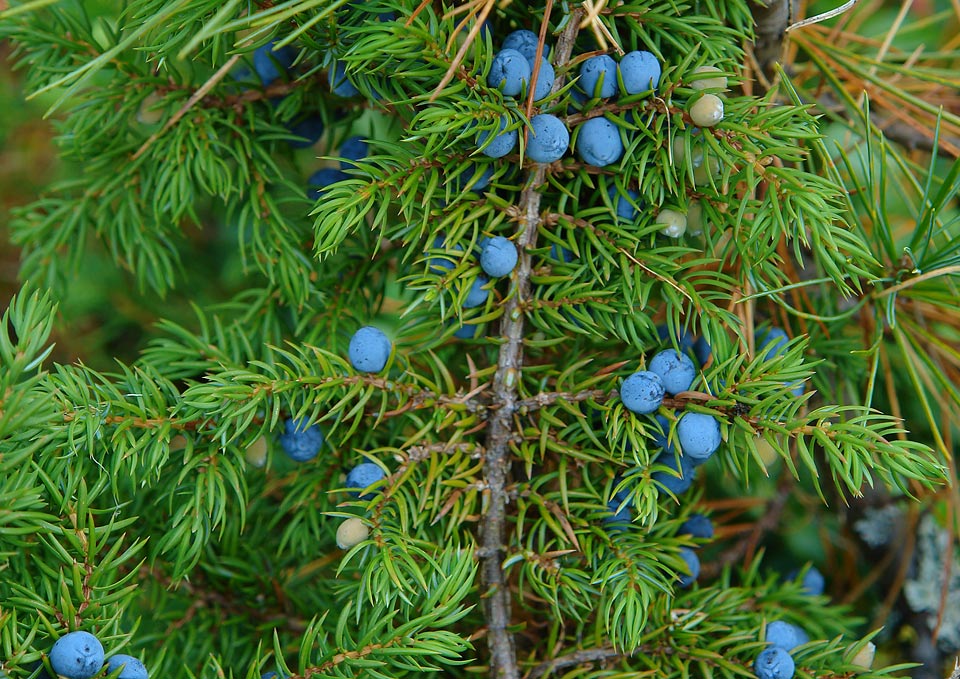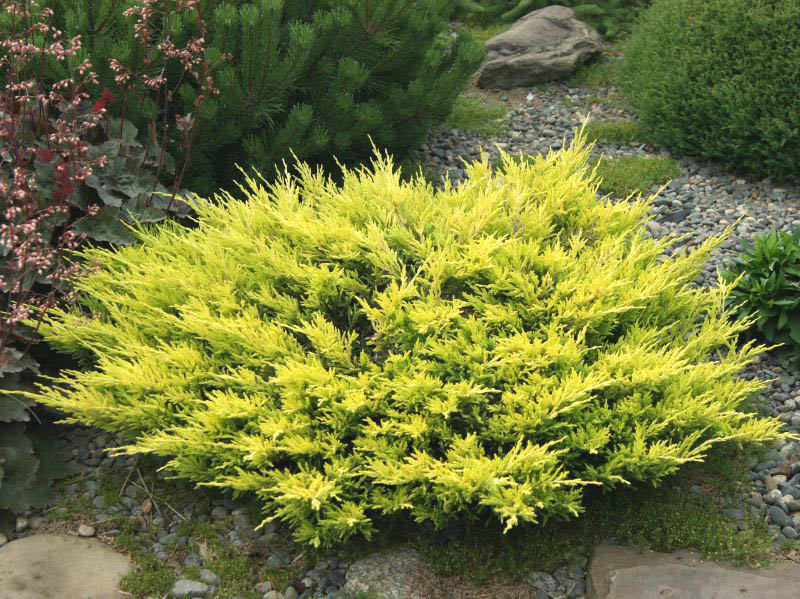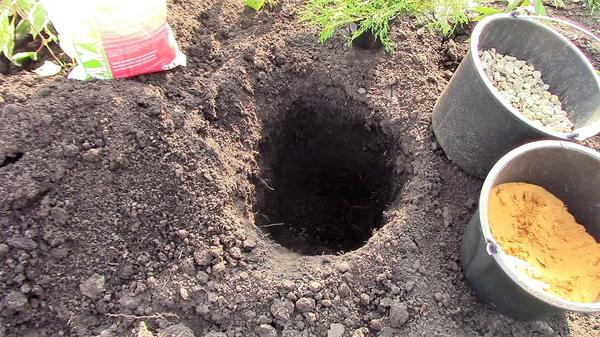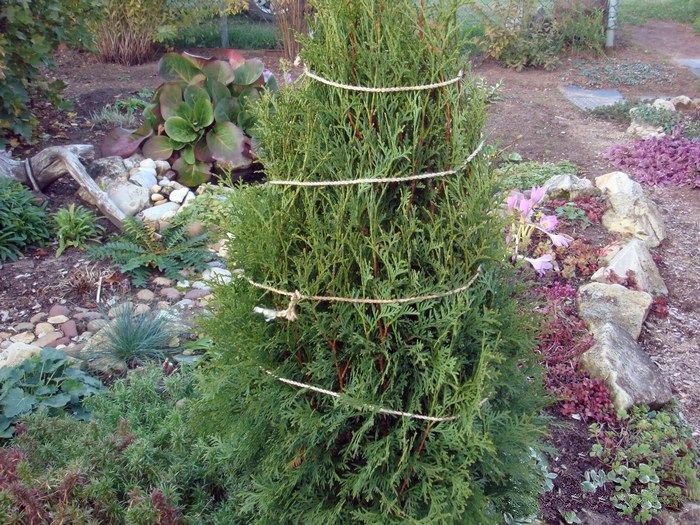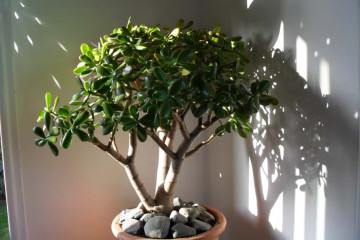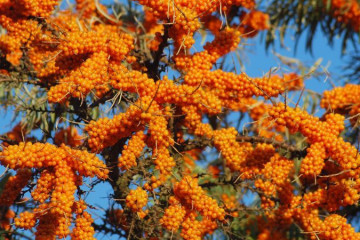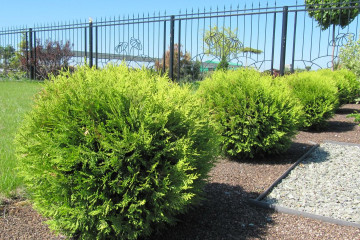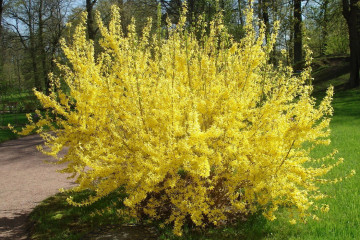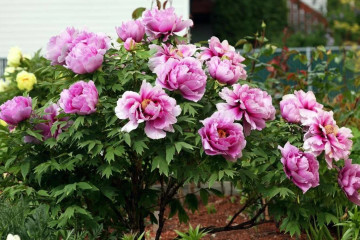Juniper - shrub or tree, how to propagate and plant it
Juniper is a variety of coniferous shrubs and arborescent plants belonging to the Cypress family. Veres, as it is often called, has medicinal properties and is used in medicine. The shrub itself is capable of purifying the air around itself and killing all disease-causing organisms. The aroma of juniper has a calming effect on the nervous system, thanks to which a person sleeps sound and healthy sleep.
Juniper - shrub or tree
Many people still cannot understand if a juniper is a tree or a shrub. In nature, there are at least 60 species of this plant. Each of them has a different shape from the others. Veres can grow up to 2 m in the form of a bush with flexible spreading branches, and maybe up to 20 m as a tree. In this case, it has several woody trunks. It depends on both the type of plant and the growing conditions. It is this feature that raises the question: a juniper is a shrub or a tree.
Origin and appearance
Juniper's lifespan is surprisingly long. Shrubs have been growing for more than 200 years, or even all 800. And this is quite a normal age for a plant. Veres is mentioned in mythical stories of Ancient Greece, in ancient Roman poetry and mythology of the Slavic peoples.
The plant is widespread. It can be found even on the continents located in the northern hemisphere.
Plant descriptions
Meeting different types of heather, people ask themselves: is juniper a coniferous or deciduous tree? You can answer it by examining in detail the appearance of the shrub. The plant has an evergreen crown and dark gray bark with a brown tint. Young shoots are reddish in color.
The leaves of heather, depending on the type, are scaly or similar to triangular needles. It is from them that a pleasant aroma emanates when the plant is in the sun or immediately after rain. Juniper needles release a wax-like substance. And it is on this that its color depends. The shrub can have a bluish, yellowish crown, sometimes with a whitish tint.
During severe drought or in the fall, juniper has a bronze tint, which occurs due to the release of substances called anthocyanins by leaves. They protect the plant from the sun's rays.
Depending on what kind of heather, the leaves also differ. Sharp, narrow, elongated are popularly called needles or needles. However, these are still shrub leaves. For this reason, difficulties arise with the definition of a juniper - it is a coniferous or deciduous tree. And yet the answer to this question is very simple. Since veres belongs to the Cypress family, it is definitely a coniferous plant.
Veres can be both monoecious and dioecious. Male cones resemble earrings with a pair of three stamens. The female cones are formed after flowering and mature within two years.At first, the fruits are green, and then turn blue with a bluish bloom. In structure, the cone berry has a friable pulp, which is used in both folk and traditional medicine.
Popular types
Thuja and juniper are often confused. Both of these plants belong to the Cypress family and are similar in appearance. However, they are different from each other. Unlike juniper, thuja grows quickly and reaches up to 70 m in height and 6 m in diameter. Its wood is gray in color and has a longitudinal fibrous bark. The scales of the needles fit tightly to each other. After flowering, cones with two seeds grow on the branches.
Differences and varieties of thuja and juniper
Now breeders have bred a large number of plants with different colors of needles, but blue thuja does not exist. Whereas juniper can have the desired color. In addition, heather can be with a multi-colored crown, for example, the Blue and Gold variety has blue and yellow needles.
To decorate their backyard plots, gardeners purchase proven varieties of heres.
Creeping juniper
It is a small bush that grows only 10 cm in height. It easily takes root both on ordinary soil and on rocky ground. But, despite being unpretentious in cultivation, creeping heather prefers to grow in areas illuminated by the sun. Before replanting a creeping juniper, it should be borne in mind that over time it grows like a carpet like grass. Therefore, you need to plant the plants at a considerable distance from each other.
Horizontal Juniper Lemon Glow
This variety of heres grows in height from 10 cm to half a meter. The crown spreads with a diameter of two and a half meters. The shrub tolerates wind, frost and drought well. This juniper variety is used for decoration:
- alpine slides;
- rockeries;
- slopes;
- flower beds;
- discount.
Juniper cypress
This shrub is also called Cossack, and it belongs to the scaly species. It grows in height up to one and a half meters. It easily tolerates severe frosts, therefore it is adapted for growing in Central Russia. Due to the fact that this shrub is unpretentious to the external environment and growing conditions, it is excellent for decorating personal plots and public places that require landscaping. You can surround them with city flower beds.
Transfer after purchase
Most often, in order to plant junipers in their garden, people go to special stores or nurseries, where they buy ready-made seedlings. The planting material must be at least 2-3 years old. It is recommended to transplant in April or May.
What is needed for landing
Before planting a creeping juniper, you need to choose a place where the heather will feel great, grow and develop. Planting material is planted in curtains. When decorating the alley, young seedlings are planted in a trench. It is recommended to choose a location as far away from fruit trees as possible. Thanks to this, it is possible to prevent the disease of the shrub with common diseases.
Choosing the best soil
Veres takes root well on any soil, but clay and loamy types of soil are difficult to tolerate. It is recommended to dig the hole twice as much as the root ball of the planting material.This is done so that the roots of the juniper are covered with soft soil. It is imperative to add peat, sand, rotten needles to the ground that will cover the root system. Drainage is recommended when planting in clay soil.
Step by step process
Instructions on how to transplant:
- Planting material is planted in a hole, which in size exceeds the root system of a seedling with an earthen clod.
- The roots are covered with earth, watered and mulched. For mulch, you can use peat, rotten leaves, newspapers, or old cloth. Mulch should be laid out in a layer of 10 cm.
- The crown of a young seedling needs to be sprayed with water from time to time.
- In the process of transplanting, it is recommended to make a fertile soil composition. To do this, take two parts of sod land and one part of peat and sand.
- The soil must be fertilized with nitroammophos. It will be enough 300 g for one bush.
- Juniper drainage is made from gravel, broken brick or coarse sand.
- The distance between the seedlings is 1.5-4 m.
Reproduction
It is interesting for amateur gardeners to know how the juniper reproduces at home. Breeding heather from seeds is a difficult procedure, since they appear on the plant only 10 years after planting. In addition, the cones take two years to ripen. Therefore, it is much easier to propagate junipers using cuttings.
Propagation by cuttings
To grow a juniper, propagating by cuttings at home is the best way. The shoots of the plant exactly repeat the behavior of the branches of the adult tree from which they were cut. If the material was taken from the central part of the crown, then the young heather will grow up, shoots from the lateral branches of the lower part will subsequently form a bush.
Before propagating a juniper at home, you need to prepare the material. It is better to cut the cuttings in the spring, treat them with a substance to stimulate the formation of roots. After that, they are dipped in sweetened water for a day and planted in prepared soil. The rooting of the plant will happen quickly enough.
Care
Veres does not require much personal care. For the plant to grow and develop, it is enough to water and feed it on time.
Watering mode
Despite the fact that the juniper easily tolerates drought, it needs watering. Most of all, he needs a sprinkling of the crown. This procedure should be done every two weeks.
Top dressing
It is recommended to feed the plant once a year in the spring. To do this, add only 50 g of nitroammophoska per 1 m².
Features of summer care
Juniper in summer does not need additional care. In autumn and spring, dry and broken branches are removed from the plant.
Features of winter care
In winter, it is worth covering only young seedlings that are not yet sufficiently strong and rooted. Adult shrubs are pulled together a little with twine so that the branches do not suffer from the snow.
Juniper will be an excellent decoration for the garden and personal plot. But before planting, you need to decide what mission the plant will perform, and plant it according to the plan: singly or in groups.

